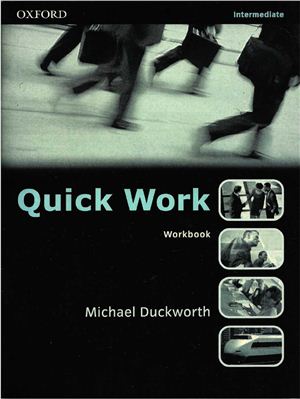Oxford University Press, 2001. - 64 pages.
An innovative, flexible, three-level short course in Business English.
Key features
* This is a short, pacy course which is practical, flexible, and easily accessible to both students and teachers.
* It has a distinctive task-centred approach, with the aim of developing key business-related skills and language. The language syllabus is selective - language is addressed on a need-to-know basis in the Student`s Book, with a more systematic review of grammar in the Workbook.
* Each of the five units covers key areas such as dealing with people, participating in meetings, exchanging information, and problem-solving. The principal focus is on developing students` speaking and listening skills.
* Each unit is divided into five or six sub-sections, which all end with a practical, work-related output task. There is a more substantial output activity at the end of the unit. Leaers are encouraged to draw on their existing skills, knowledge, and experience of the workplace to carry out these tasks.
* Contexts are introduced by up-to-date material from a variety of authentic sources. The content has an inteational feel, and does not present specifically British or American cultural or linguistic models.
* There is a strong emphasis on vocabulary development, with key vocabulary lists in each unit.
An innovative, flexible, three-level short course in Business English.
Key features
* This is a short, pacy course which is practical, flexible, and easily accessible to both students and teachers.
* It has a distinctive task-centred approach, with the aim of developing key business-related skills and language. The language syllabus is selective - language is addressed on a need-to-know basis in the Student`s Book, with a more systematic review of grammar in the Workbook.
* Each of the five units covers key areas such as dealing with people, participating in meetings, exchanging information, and problem-solving. The principal focus is on developing students` speaking and listening skills.
* Each unit is divided into five or six sub-sections, which all end with a practical, work-related output task. There is a more substantial output activity at the end of the unit. Leaers are encouraged to draw on their existing skills, knowledge, and experience of the workplace to carry out these tasks.
* Contexts are introduced by up-to-date material from a variety of authentic sources. The content has an inteational feel, and does not present specifically British or American cultural or linguistic models.
* There is a strong emphasis on vocabulary development, with key vocabulary lists in each unit.

